Silver jewelry, often overshadowed by the allure of gold and the modernity of platinum, holds a timeless elegance that resonates with many. Its charm lies in its versatility and the soft, lustrous sheen that can complement any outfit. However, silver’s beauty is prone to tarnish, a natural process that can dull its sparkle but, fortunately, not its spirit.
This unique characteristic of silver jewelry calls for special attention and care, setting it apart in the vast universe of precious metals. It demands a gentle yet effective approach to cleaning and maintenance, ensuring that its glow is preserved and enhanced over time. Key methods for cleaning silver jewelry include using baking soda and aluminum foil, specialized silver polishes, and simple DIY solutions that are both safe and effective.
Each cleaning technique offers its benefits, suited to different levels of tarnish and silver pieces. From the gentle rubbing with a soft cloth to the more involved chemical reactions of a baking soda bath, these methods restore the jewelry’s shine and protect its delicate surface. The following sections will explore these strategies in detail, providing a comprehensive guide to reviving the luster of silver jewelry and making it a cherished accessory for years to come.
What is tarnished jewelry?
Tarnished jewelry refers to pieces that have lost their shine and color due to a chemical reaction on their surface. This reaction often results from exposure to air and other elements, leading to a dull, discolored appearance. Silver jewelry is particularly prone to tarnishing, but gold and costume jewelry can also experience similar effects.
Understanding tarnish is crucial for proper jewelry care, as it helps identify the best cleaning methods to restore the original luster of precious pieces.
Why does jewelry tarnish?
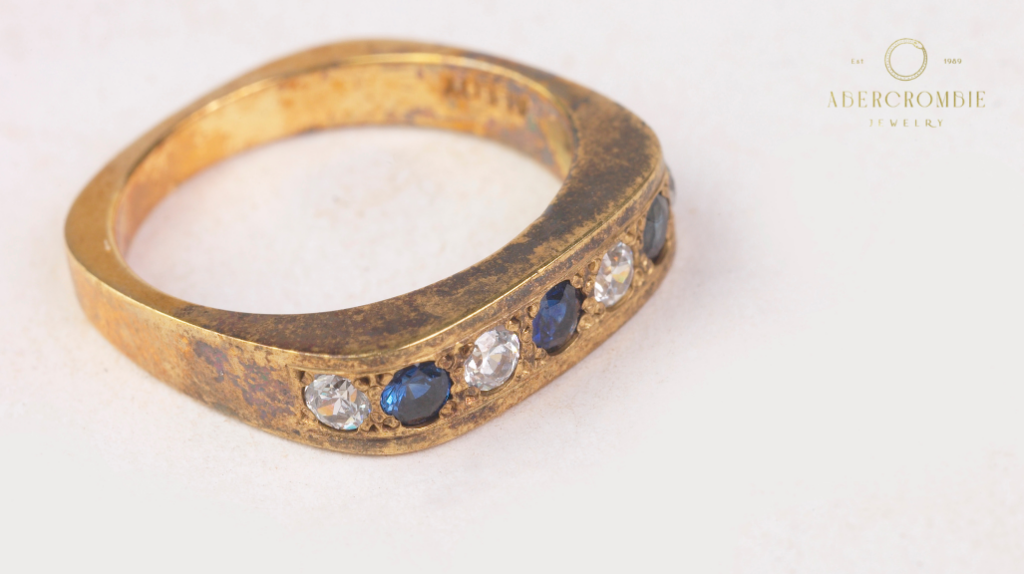
Jewelry tarnishes due to exposure to elements like air and moisture, which cause chemical reactions on the metal’s surface. Silver, for instance, reacts with sulfur compounds in the air, leading to silver sulfide, which appears as a black tarnish. Gold and costume jewelry can tarnish when exposed to chemicals found in everyday substances like perfumes, lotions, and cleaning products.
Understanding these causes is key to preventing tarnish and selecting the most effective cleaning methods to maintain the beauty of your jewelry.
Exposure to elements
Exposure to air, moisture, and sunlight can accelerate the tarnishing process in jewelry. Metals like silver and copper are especially susceptible to tarnish when they come into contact with environmental elements. This exposure leads to a loss of sheen and color, making the jewelry appear dull.
Chemical reactions
Tarnishing is a chemical reaction between metal and environmental substances, such as sulfur in the air, which forms a layer of tarnish on silver. For gold and costume jewelry, the reaction might involve chemicals in everyday products like cosmetics, causing discoloration and dullness. Understanding these reactions is crucial for preventing and cleaning tarnished jewelry.
Initial steps before cleaning tarnished jewelry
Before starting the cleaning process, it’s essential to take some initial steps to ensure its safety and effectiveness. Inspecting the jewelry for damage is crucial to avoid worsening any existing issues. Gathering necessary materials, such as soft cloths, mild dish soap, baking soda, and aluminum foil, prepares you for various cleaning methods.
These preparatory steps facilitate a smoother cleaning experience and help achieve the best results in restoring your jewelry’s luster.
Inspecting the jewelry for damage
Before cleaning, closely examine your jewelry for any signs of damage, such as bent prongs, loose stones, or cracked surfaces. Identifying these issues can prevent further harm during the cleaning process.
Gathering necessary materials
Prepare all the materials you’ll need for cleaning to ensure a smooth and efficient process. Everything on hand minimizes the risk of damage from prolonged exposure to cleaning agents.
| Material Needed | Purpose | Notes |
| Soft cloths | Cleaning and drying | Use lint-free cloths to avoid scratching. |
| Mild dish soap | Creating a soapy solution | Choose a soap-free from harsh chemicals. |
| Baking soda | Gentle abrasive | Helps remove tarnish without scratching. |
| Aluminum foil | Chemical tarnish removal | Used in combination with baking soda for silver. |
| Soft-bristled brush | Scrubbing | For detailed cleaning, especially on gold. |
| Warm water | Soapy solution preparation | Use with dish soap for a gentle cleaning solution. |
| Bowl or container | Soaking jewelry | Needed for creating a cleaning bath. |
Ensure you have these materials ready before starting the cleaning process, which should be tailored to the specific type of jewelry you are cleaning.
How to clean tarnished silver jewelry?
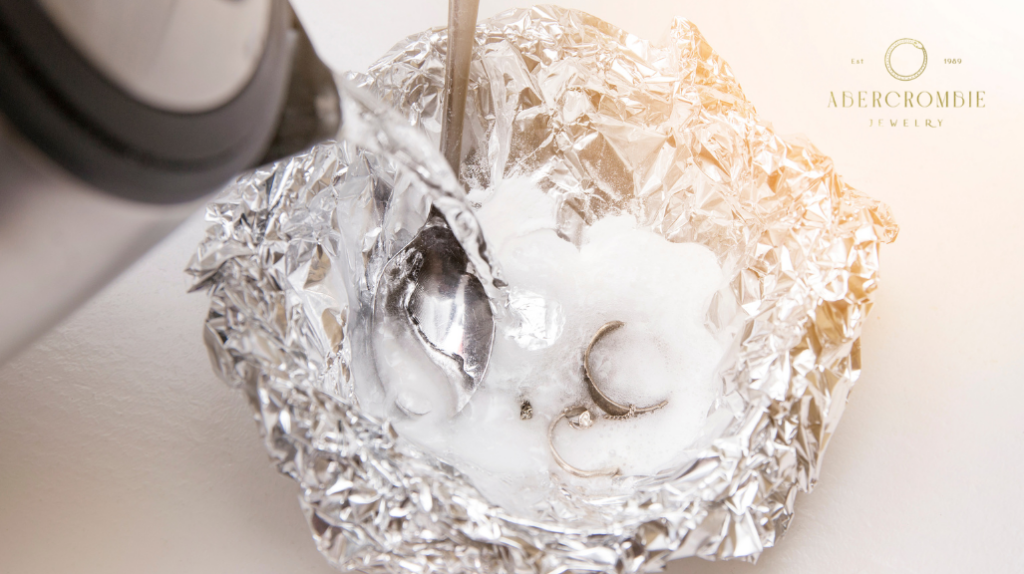
Cleaning tarnished silver jewelry involves safely removing and restoring the metal’s original shine. Using baking soda and aluminum foil creates a chemical reaction that lifts the tarnish away without abrasive scrubbing. The silver polish applied with a soft cloth can buff the jewelry to a shine for targeted polishing.
Both methods are effective yet gentle, ensuring the longevity and beauty of silver pieces. Properly cleaning silver jewelry enhances its appearance and preserves its value and charm.
Using baking soda and aluminum foil
Combine baking soda with water on aluminum foil to clean silver jewelry. This method is effective for removing tarnish through a safe chemical reaction. The exact ratio of baking soda to water for an effective cleaning solution is one tablespoon of baking soda to 1 cup of water.
Creating an aluminum foil bath
- Line a bowl with aluminum foil, shiny side up.
- Fill the bowl with hot water.
- Add one tablespoon of baking soda per cup of water used.
- Submerge the silver jewelry in the solution.
- Let it sit for 5-10 minutes, depending on the level of tarnish.
- Rinse the jewelry with clean water and dry it with a soft cloth.
| Step | Action | Details |
| 1 | Line a bowl with foil | Use aluminum foil, shiny side up. |
| 2 | Add hot water | Fill the bowl to accommodate the jewelry. |
| 3 | Mix in baking soda | 1 tablespoon per cup of water. |
| 4 | Submerge jewelry | Ensure it’s fully covered by the solution. |
| 5 | Wait 5-10 minutes | Time may vary based on tarnish severity. |
| 6 | Rinse and dry | Use clean water and a soft cloth. |
The chemical reaction process
The interaction between the aluminum foil, baking soda, and water creates a chemical reaction that transfers the tarnish from the silver to the aluminum. This process, known as an electrochemical reaction, occurs because silver sulfide (the tarnish) prefers to transfer its sulfur atoms to aluminum when in contact with a baking soda solution. This reaction is safe for the jewelry and does not scratch or harm the silver’s surface.
How to clean tarnished gold jewelry?
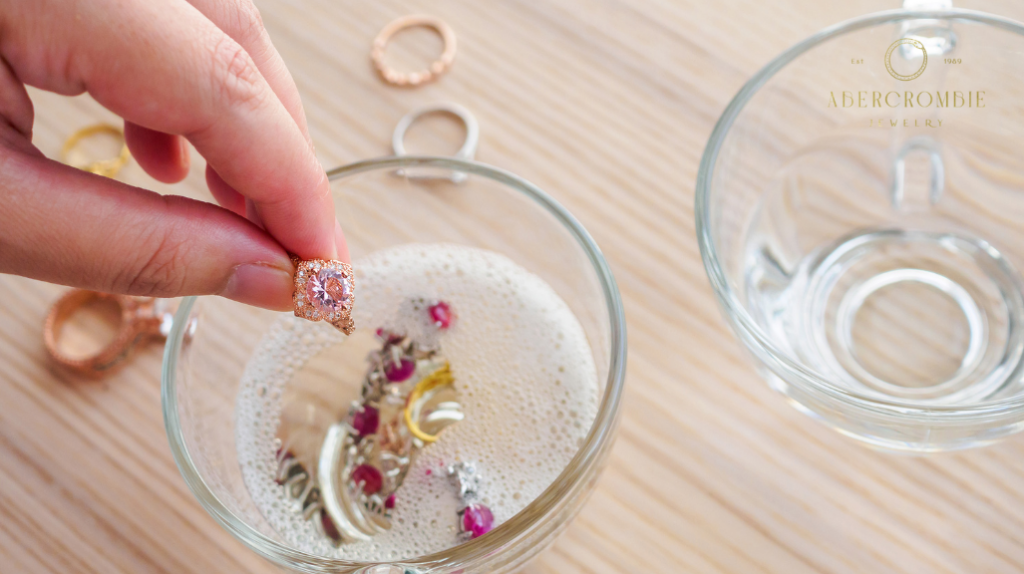
Cleaning tarnished gold jewelry restores its brilliance without causing damage. Mild dish soap and warm water are gentle yet effective methods for lifting dirt and reducing tarnish. For more stubborn tarnishes, gold cleaning solutions designed for this precious metal can be used following product instructions.
These steps ensure that gold jewelry retains its luster and beauty, emphasizing the importance of regular care and maintenance for preserving the quality and appearance of these cherished items.
Using mild dish soap and warm water
Mix mild dish soap with warm water to create a gentle cleaning solution. The ideal temperature for the water should be lukewarm, neither too hot nor too cold, to avoid causing potential damage to the jewelry. Use a dish soap that is gentle and free from harsh chemicals, specifically labeled as safe for gold or jewelry cleaning.
Preparing soapy water solution
Dissolve a small amount of dish soap to prepare a soapy water solution. The exact amount of dish soap is about a few drops per cup of water, ensuring the solution is effective yet gentle enough not to damage the gold.
| Water Temperature | Dish Soap Type | Amount of Dish Soap | Purpose |
| Lukewarm | Gentle, jewelry-safe | A few drops per cup of water | To create a cleaning solution that is effective yet gentle on gold jewelry |
Soaking and gently scrubbing
- Soak the gold jewelry in the soapy water for 5-10 minutes. This allows time for the solution to loosen any dirt or tarnish.
- Gently scrub the jewelry with a soft-bristled brush. A baby toothbrush or a soft paintbrush is ideal, as they are soft enough to clean without scratching the gold.
| Step | Action | Time | Tool | Purpose |
| 1 | Soak | 5-10 minutes | Bowl of soapy water | Loosen dirt/tarnish |
| 2 | Scrub | Gentle scrubbing | Soft-bristled brush | Remove loosened dirt/tarnish without scratching |
Using gold cleaning solutions
Gold cleaning solutions specifically formulated for cleaning gold jewelry can be used for tougher tarnishes. Always follow the product instructions carefully to ensure the solution cleans effectively without damaging the jewelry.
Selecting a suitable solution
Choose a gold cleaning solution appropriate for the type of gold and any gemstones it may have. It’s important to select a product that is well-reviewed and recommended for cleaning gold jewelry.
Following product instructions
Different solutions may have specific requirements, such as soaking time and whether rinsing is necessary. Following these instructions is crucial for the safety and effectiveness of the cleaning process. This detailed approach to cleaning tarnished gold jewelry provides a comprehensive guide to restoring the beauty and luster of gold pieces safely and effectively.
How to clean tarnished costume jewelry?

Cleaning tarnished costume jewelry requires a delicate touch to avoid damage. A soft cloth is often the best approach, as it allows for dry wiping to remove surface tarnishes without introducing moisture or harsh chemicals that could harm the jewelry. Avoiding water and chemicals is crucial, as many costume pieces are made from materials that these substances can easily damage.
This method emphasizes the importance of gentle care and maintenance to extend the life and beauty of costume jewelry.
Using a soft cloth
Employ a microfiber cloth for cleaning, as it’s gentle on the costume jewelry’s surface and effective in removing tarnish without causing scratches. Microfiber cloths are ideal because they are soft, non-abrasive, and do not leave lint behind. For cleaning small or intricate areas, fold the cloth into a small square or triangle to achieve better control and precision during cleaning.
Dry wiping method
The dry wiping method involves gently rubbing the tarnished areas with a soft cloth. Use light, circular motions to buff the surface without applying too much pressure, which could damage the jewelry. If the piece has textured surfaces or crevices, use a corner of the folded cloth to reach into these areas carefully.
The key is to be gentle and patient, allowing the friction from the cloth to gradually remove the tarnish.
Avoiding water and chemicals
It’s crucial to avoid water and harsh chemicals when cleaning costume jewelry. These substances can cause damage, such as rusting or discoloration, that may be irreversible.
| Chemicals to Avoid | Reason |
| Alcohol | It can strip away protective coatings and dull the finish. |
| Vinegar | Its acidity can corrode metal and damage porous stones. |
| Bleach | Highly corrosive and can cause irreversible damage. |
| Ammonia | It can be too harsh for delicate materials and finishes. |
| Acetone | Found in nail polish remover, can dissolve certain materials. |
Preventing jewelry from tarnishing
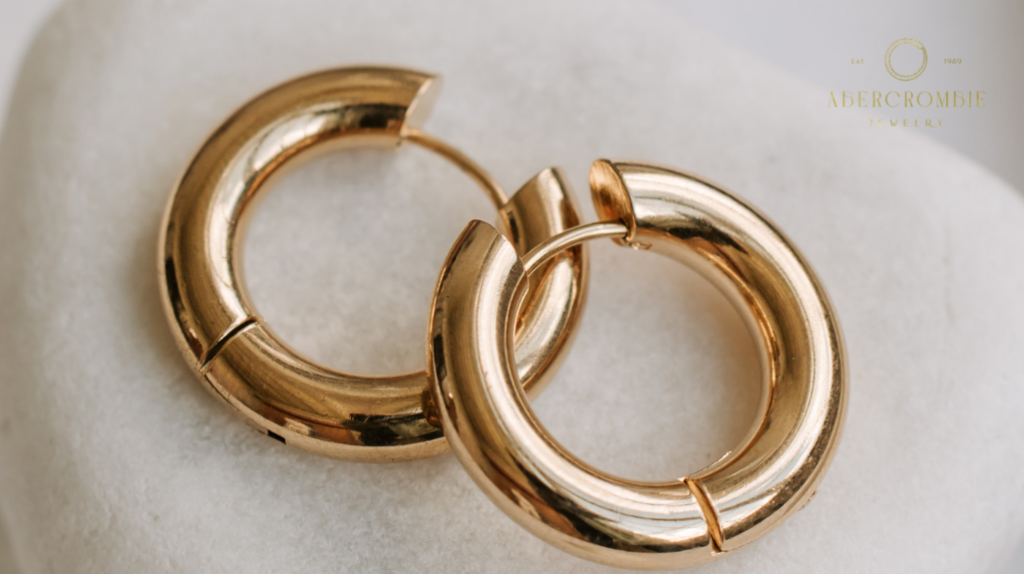
Preventing tarnish on jewelry involves proactive measures to protect and maintain the metal’s integrity. Storing jewelry properly in anti-tarnish bags or a cool, dry place reduces exposure to elements that accelerate tarnish. Regular cleaning and maintenance, including routine wiping after use and periodic detailed cleaning, are crucial in keeping jewelry tarnish-free.
These preventive steps help extend the life and beauty of jewelry, ensuring it remains a sparkling addition to any collection.
Storing jewelry properly
To minimize tarnish, store your jewelry in a way that limits exposure to air and humidity. Proper storage is key to maintaining its shine and preventing tarnish.
Using anti-tarnish bags
Anti-tarnish bags or cloths provide a protective environment that helps prevent the chemical reactions leading to tarnish. These specialized storage solutions are essential for keeping your jewelry looking its best.
| Anti-Tarnish Product | Description | How It Works | Replacement Frequency |
| Anti-tarnish bags | Soft pouches or bags designed to protect jewelry. | Contain materials that absorb sulfur and moisture from the air. | Every 2 years or when effectiveness diminishes. |
| Anti-tarnish cloths | Cloths are used for wrapping jewelry or lining jewelry boxes. | Treated with chemicals that neutralize airborne substances causing tarnish. | Replace or re-treat every 2-3 years. |
| Silica gel packs | Small packets are used to absorb moisture. | Placed alongside jewelry to reduce humidity in storage. | Check monthly; replace when saturated. |
| Anti-tarnish strips | Paper strips that absorb tarnish-producing gases. | Placed in jewelry storage areas to neutralize harmful gases. | Replace every 6 months. |
Keeping in a cool, dry place
Storing jewelry in a cool, dry place helps protect it from moisture and temperature fluctuations that can accelerate tarnishing. Avoid areas like bathrooms, which have higher humidity levels.
Regular cleaning and maintenance
Regular cleaning and maintenance routines ensure potential tarnish is addressed before it can develop further. This proactive approach keeps your jewelry in pristine condition.
| Jewelry Type | Cleaning Frequency | Maintenance Tips |
| Silver | Every 1-2 months | Wipe with a soft cloth after each use; store in anti-tarnish bags. |
| Gold | Every 2-3 months | Clean with mild soap and water; dry thoroughly before storage. |
| Costume Jewelry | As needed | Avoid exposure to water and chemicals; store separately. |
| Gemstones | Depending on the type, every 3-6 months | Use appropriate cleaners; avoid harsh chemicals. |
Routine wiping after use
Wiping jewelry with a soft cloth after each use removes oils, lotions, and other substances that could contribute to tarnishing over time. This simple step effectively maintains the metal’s luster.
Periodic detailed cleaning
Periodically, a more detailed cleaning with appropriate cleaners for each type of metal can rejuvenate the appearance of your jewelry. This deep clean addresses any build-up and restores shine. Implementing these strategies for storing and maintaining your jewelry can significantly reduce the risk of tarnish, ensuring your pieces remain bright and beautiful for years.
When to seek professional cleaning?
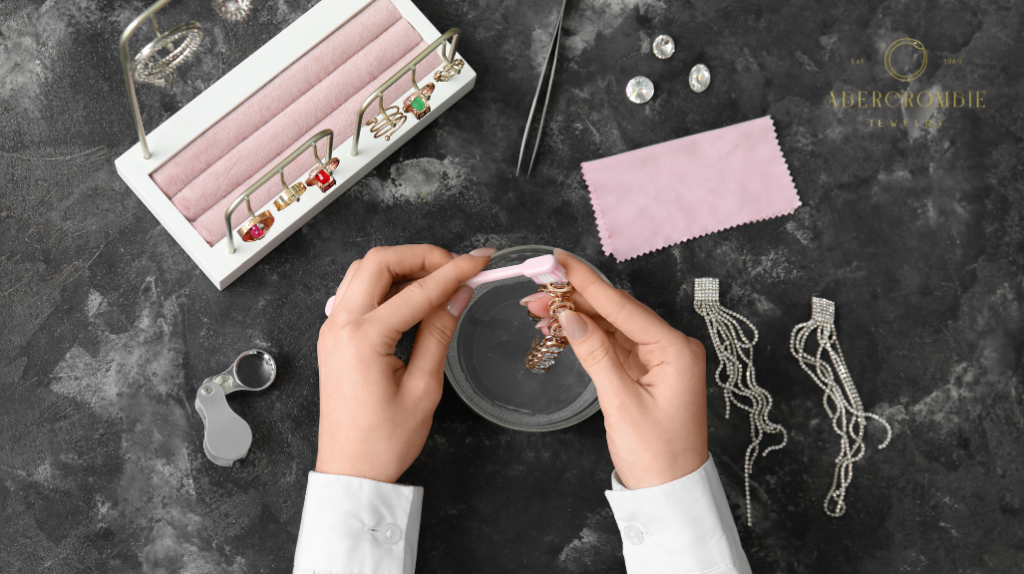
Seeking professional cleaning becomes necessary when jewelry exhibits signs of significant tarnish or damage that home methods cannot safely resolve. Professionals possess the tools and expertise to clean and repair delicate or intricate pieces without risking further harm. Additionally, professional cleaning can offer a deeper cleaning, restoring the sparkle and integrity of precious items more effectively than at-home solutions.
Recognizing when to turn to a professional ensures that your jewelry receives the care it needs to remain a treasured part of your collection.
Signs that professional help is needed
Professional cleaning is advised when jewelry has deep-set tarnish, delicate designs that are difficult to clean at home, or visible damage such as loose stones or broken parts. Persistent dullness despite thorough home cleaning also indicates the need for professional care.
Benefits of professional cleaning
Opting for professional cleaning offers several benefits, including advanced techniques and equipment that can safely restore jewelry to its original condition. Professionals can also identify and repair damage that might not be visible to the untrained eye, extending the life of your jewelry and ensuring it remains an integral part of your collection for years to come.

